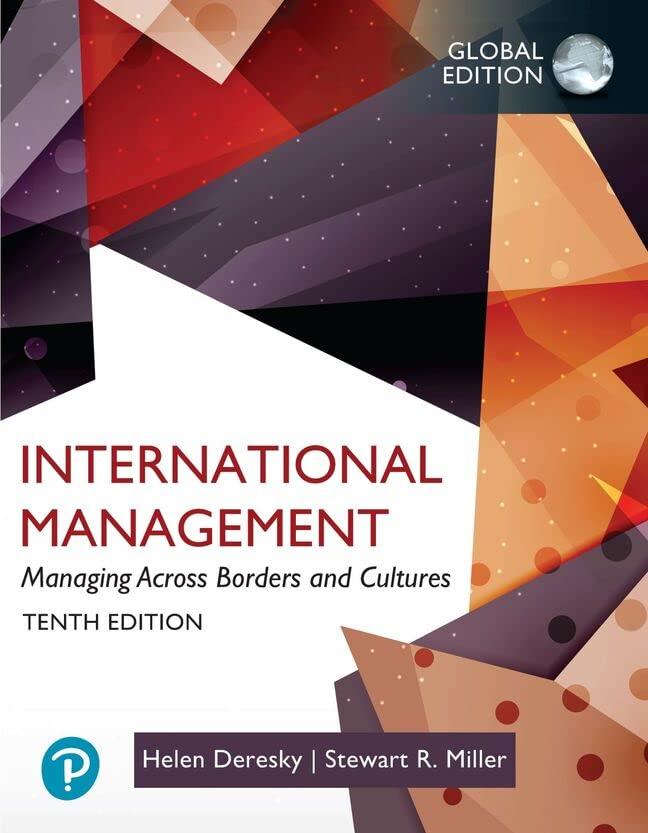The artists who come to us often have no idea what it is like to be part
Question:
The artists who come to us often have no idea what it is like to be part of an organization like ours, because there is no other organization like Cirque!. Even though we have a lot of really smart and creative people, your success here lives and dies on relationship building. People who have a natural ability to communicate well, who are authentic and transparent, do well here.”2
—Pat Norris, director of human resources at Cirque’s Resident Shows Division, in 2014 Montreal-based entertainment company Cirque du Soleil
(Cirque), which started in 1984 as a small group of young street performers, went on to become a worldwide entertainment giant with more than 4,000 employees. These included 1,300 performers from 50 different countries. Cirque’s big-budget, animal-free circuses included a narrative framework, opera, and theater, with lavish costumes, huge sets, original music, and high-tech special effects. No spoken language was used in its shows, and so they were able to reach diverse audiences.
Close to 150 million spectators in nearly 300 cities worldwide were reported to have seen a Cirque show since 1984 and about 15 million people watched its show in 2014.
Through its strong culture of risk taking and creativity, Cirque became a leader in artistic entertainment. It offered a creative work environment where artists were free to express their thoughts and grow both professionally and personally.
The culture was open and family oriented. Artists were offered a competitive salary, a safe work environment, and support for their health and well-being. Other benefits included group insurance, a pension plan, travel and health benefits, and paid holidays. Cirque also encouraged artistic creativity among its employees in the workplace. According to a former employee,
“I had the great honour of working for this world respected company. It was hard work of training and pushing yourself to your physical and mental abilities. My management and co-workers were encouraging and inspiring to work with. The greatest reward every night was seeing the audience leaving with a smile.”3 Cirque ensured that it functioned as a unified whole, bonded by a common set of workforce principles and practices, despite the cultural diversity of its employees. It remained accessible and adaptable as an employer. However, analysts felt that one of the challenges that Cirque could face going forward, would be to preserve its creative culture and family atmosphere.
Another challenge for the company was to retain its artists who were talented, rare to find, and difficult to replace. A major concern for Cirque was addressing its global HR practices. Cirque had a decentralized HR management system wherein artists of touring shows were governed by the rules and policies of the countries in which they were performing at a particular point of time. Moreover, Cirque adopted a global recruitment policy that was driven by a geocentric approach of hiring talent from all over the world. According to industry observers, the challenge for Cirque would be to effectively manage its global employee base and the effect of its actions on the company’s culture. Talking about Cirque’s strategy, Marie-Josée Guilbault
(Guilbault), vice president of organization and culture at Cirque, said, “We can’t be hierarchical or corporate; it won’t work for the type of business that we are. We’re very careful to be natural. We’re very big, so we can’t be fully organic, but we know we need to be flexible.”4 Since 2008, Cirque had been struggling with problems such as declining profits, a spate of poorly received shows, and growing competition. Its net worth reportedly dropped from US$2.7 billion in 2008 to about US$2.2 billion in 2013.5 In 2013, Cirque laid off 400 employees at its Montreal headquarters, citing the high production costs of its shows and a weak economy. Some analysts also reported that Cirque planned to refocus its business away from circus shows and on to other ventures. Commenting on whether the sun had set for Cirque, Howard Sherman, an arts management consultant, said, “Unless they are overwhelmed by hubris, mismanagement or both, Cirque should to be around for a long time, and reports of their doom are not merely exaggerated but unfounded
[. . . .] Cirque du Soleil is not too big to fail, but the company is too inventive and successful to quickly start counting out, like so many clowns in a car........”6
Question 1. Discuss the global human resource management practices of Cirque. Discuss the challenges faced by Cirque in managing its global employee base.
2. Critically analyze the culture at Cirque. How, according to you, has the culture fostered creativity and teamwork in the company?
3. People from five continents and more than 50 nationalities are represented within Cirque. How does the company manage such culturally diverse talent to gain competitive advantage?
4. What steps should Cirque take to retain its employees and preserve its culture?
Step by Step Answer:

International Management Managing Across Borders And Cultures
ISBN: 9781292430362
10th Global Edition
Authors: Helen Deresky





